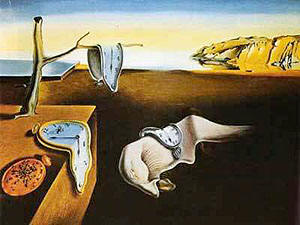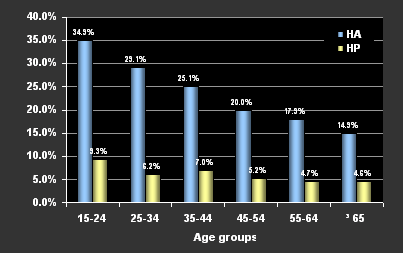Hypnagogic and Hypnopompic Hallucinations
First created | 02/03/2000
Last edited |
- Ohayon MM, Priest RG, Caulet M, Guilleminault C. Hypnagogic and hypnopompic hallucinations: pathological phenomena? Br J Psychiatry 1996;169: 459-67.
Hypnagogic hallucinations are vivid perceptual experiences occurring at sleep onset while hypnopompic hallucinations are similar experiences but occurring at awakening.
The first systematic description of these phenomena was made in 1846 by the French psychiatrist Baillarger, who called them psycho-sensory hallucinations. The term "hypnagogic", from hypno (sleep) and agogos (induced) was introduced by Maury in 1848, to designate the illusions heralding sleep.
The term "hypnopompic", from pompe (act of sending), was first used in 1918 by Myer to describe these phenomena occurring during the transition between sleep and awakening.
The prevalence of hypnagogic and hypnopompic hallucinations in the general population was not known before the Sleep-EVAL study. These perceptual phenomena, however, are frequent in narcolepsy, occurring in between 25 to 30% of narcoleptics (Broughton, 1982).
Yoss and Daly (1962) included these hallucinations in the "narcolepsy tetrad" on which they based the clinical diagnostic criteria of narcolepsy. These hallucinations have more recently been reported in disorders of excessive daytime sleepiness, and are often reported by subjects with sleep paralysis at sleep onset (Goode, 1962; Hishikawa, 1976).

Finally, certain psychoactive substances, such as khat (Granek et al., 1988) and hashish (Baillarger, 1846; Moreau de Tours, 1845) have been reported to induce hypnagogic and hypnopompic hallucinations.
RESEARCH
A representative sample of 4972 individuals, between the ages of 15 to 100, of the noninstitutionalized population of UK was interrogated by telephone (79.8% of those contacted). Interviews were performed by lay interviewers using the Sleep-EVAL System, a computerized system that guided the interviewer through the interview process.
RESULTS
Thirty-seven percent of the sample reported experiencing hypnagogic hallucinations and 12.5% reported hypnopompic hallucinations. Both type of hallucinations were significantly more common among subjects with symptoms of insomnia, excessive daytime sleepiness or mental disorders.
HOW FREQUENT ARE THESE HALLUCINATIONS?

in the European general population. Neurology. 2002 Jun 25;58(12):1826-33.
Based on this study, the prevalence of narcolepsy in the United Kingdom was calculated at 0.04%. Hypnagogic and hypnopompic hallucinations were much more common than expected, with a prevalence that far exceeds that which can be explained by the association with narcolepsy. The presence of hypnopompic hallucinations may be a better indicator of narcolepsy than hypnagogic hallucinations in subjects reporting excessive daytime sleepiness.
REFERENCES
Ohayon MM, Priest RG, Caulet M, Guilleminault C. Hypnagogic and hypnopompic hallucinations: pathological phenomena? Br J Psychiatry 1996;169: 459-67.
